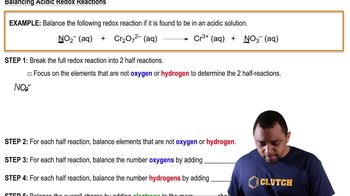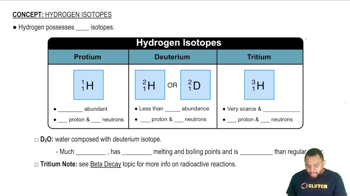Here are the essential concepts you must grasp in order to answer the question correctly.
Half-Reaction
A half-reaction represents either the oxidation or reduction process occurring in an electrochemical cell. In the context of a hydrogen electrode, the half-reaction at the cathode involves the reduction of protons (H⁺) to form hydrogen gas (H₂). This process can be expressed as 2H⁺ + 2e⁻ → H₂, indicating that two electrons are gained by two protons to produce one molecule of hydrogen gas.
Recommended video:
Redox Half Reactions Example
Voltaic Cell
A voltaic cell, also known as a galvanic cell, is an electrochemical cell that converts chemical energy into electrical energy through spontaneous redox reactions. In this type of cell, the anode undergoes oxidation while the cathode undergoes reduction. The flow of electrons from the anode to the cathode generates an electric current, which can be harnessed for external use.
Recommended video:
Standard Hydrogen Electrode (SHE)
The Standard Hydrogen Electrode (SHE) is a reference electrode used in electrochemistry, defined as having a hydrogen ion concentration of 1 M, a pressure of hydrogen gas at 1 atm, and a temperature of 25°C. It serves as the baseline for measuring the standard electrode potentials of other half-reactions. The potential of the SHE is assigned a value of 0 volts, allowing for the comparison of the reactivity of different electrodes.
Recommended video:
 Verified step by step guidance
Verified step by step guidance

